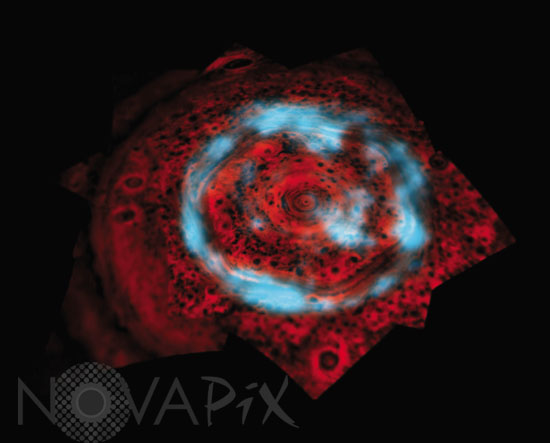Photo Agency - Astronomy - Space - Nature

Aurora on Saturn
auteur: Nasa/JPL/Univ of Az/Novapix
référence: a-sat05-10050
Image Size 300 DPI: 12 * 10 cm
This image of the northern polar region of Saturn shows both the aurora and underlying atmosphere, seen at two different wavelengths of infrared light as captured by NASA's Cassini spacecraft. Energetic particles, crashing into the upper atmosphere cause the aurora, shown in blue, to glow brightly at 4 microns (six times the wavelength visible to the human eye). The image shows both a bright ring, as seen from Earth, as well as an example of bright auroral emission within the polar cap that had been undetected until the advent of Cassini. This aurora, which defies past predictions of what was expected, has been observed to grow even brighter than is shown here. Silhouetted by the glow (cast here to the color red) of the hot interior of Saturn (clearly seen at a wavelength of 5 microns, or seven times the wavelength visible to the human eye) are the clouds and haze that underlie this auroral region. This image is a composite captured with Cassini's visual and infrared mapping spectrometer. The aurora image was taken in the near-infrared on Nov. 10, 2006, from a distance of 1,061,000 kilometers (659,000 miles), with a phase angle of 157 degrees and a sub-spacecraft planetocentric latitude of 52 degrees north. The image of the clouds was obtained by Cassini on June 15, 2008, from a distance of 602,000 kilometers (374,000 miles) and a sub-spacecraft planetocentric latitude of 73 degrees north.
Keywords for this photo:
2006 - ASTRONOMY - AURORA - AURORA BOREALIS - CASSINI - INFRARED - MAGNETIC FIELD - PLANET - SATURN -
Contact : Stéphane Aubin +33-(0)9-51-26-53-76
© Novapix - All rights reserved






